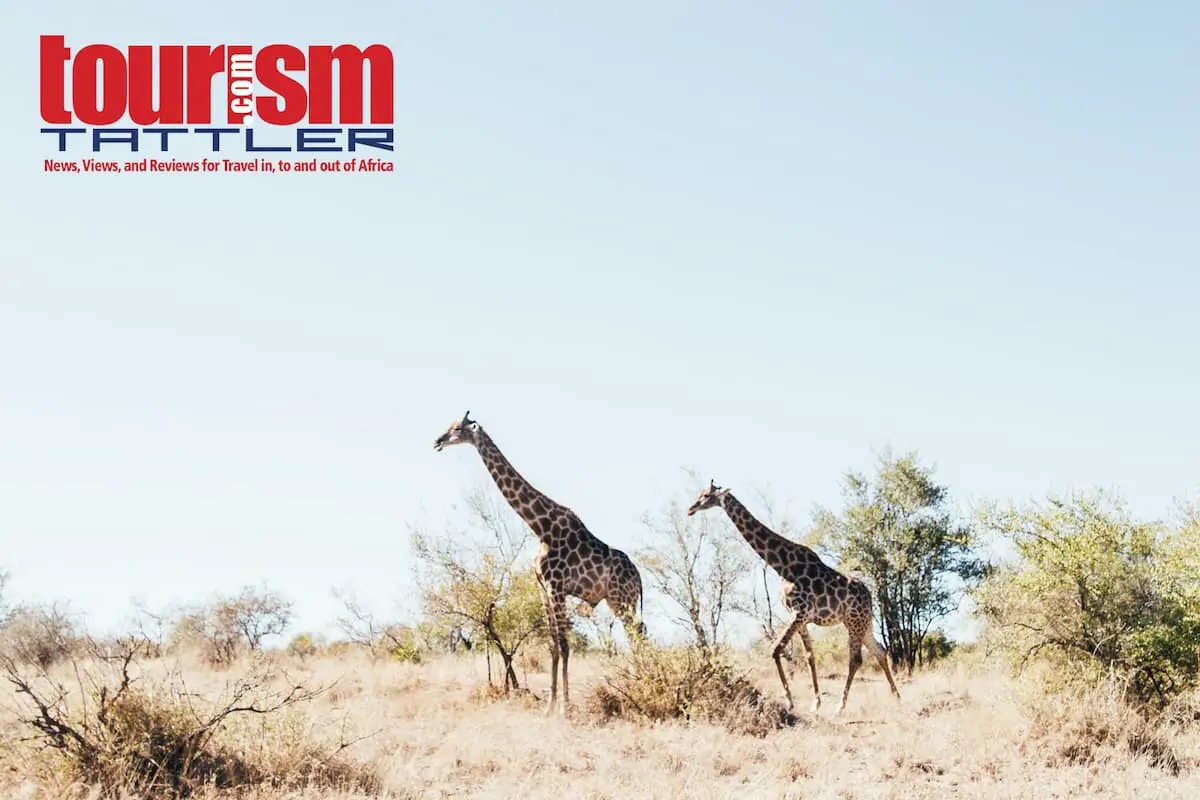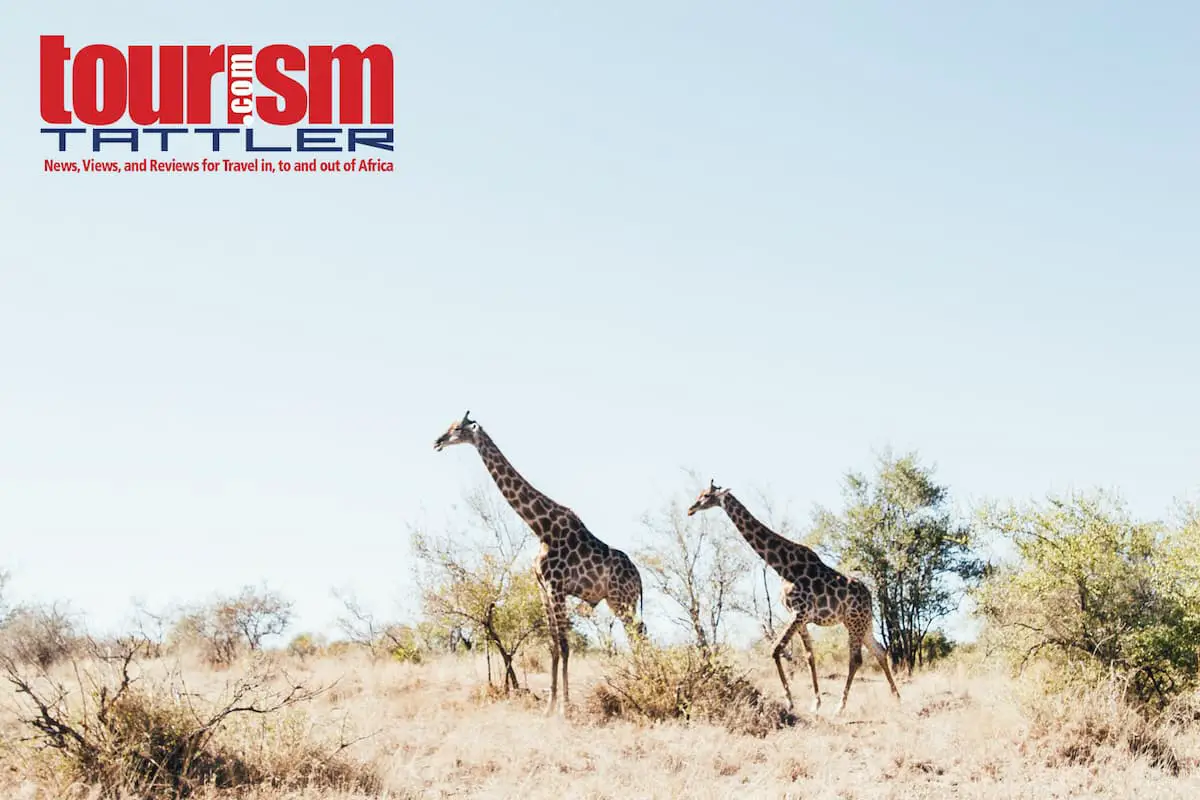Property Review – Kwandwe Private Game Reserve
The word ‘Kwandwe’ is derived from the isiXhosa language and means “Place of the Blue Crane”, which is appropriate given that this endangered species is South Africa’s national bird, and ties-in well with the Private Game Reserve’s environmental and conservation philosophy. By Tourism Tattler correspondent Jeannie Burns.
 My husband Keith and I visited Kwandwe Private Game Reserve in South Africa’s Eastern Cape province, near Grahamstown during August, so we just missed viewing the Blue Crane as it migrates to the Karoo in the North Western Cape during May returning in September. The Blue Crane is but one of over three hundred bird species to be found on the reserve, making this an ideal Aviatourism attraction.
My husband Keith and I visited Kwandwe Private Game Reserve in South Africa’s Eastern Cape province, near Grahamstown during August, so we just missed viewing the Blue Crane as it migrates to the Karoo in the North Western Cape during May returning in September. The Blue Crane is but one of over three hundred bird species to be found on the reserve, making this an ideal Aviatourism attraction.
On arrival at Kwandwe, we were warmly welcomed by resident hostess Jennifer Clack and given a refreshing glass of homemade lemon juice while the field ranger, Chase Crampton parked our car, transferred our baggage to a safari vehicle and drove us to the Great Fish River Lodge. Although Chase had only recently joined the ‘Kwandwe Team’ he was most knowledgeable and imparted information and answered questions like a seasoned pro.
Having arrived at dusk, we saw the lights of the Lodge twinkling as we descended from the top of the hills towards the banks of the Great Fish River. We could not have asked for a warmer welcome as the Operations Manager, Bongi Totsa greeted us with open arms inside the elegant but earthy stone and thatch lodge building. Relaxing in front of a cozy log fire with a glass of South African brand sherry in hand, our African Safari experience was about to begin.
From Dream to Reality
Kwandwe covers 22,000Ha (54,000 acres) of pristine wilderness through which the Great Fish River meanders for approximately 30kms as it flows eastward to the Indian Ocean. The land was originally made up of several private farms, each struggling along breeding small stock, which included sheep, goats and ostriches. Two American entrepreneurs and a naturalist guide, Angus Sholto-Douglas and his wife Tracy brought about the re-birth of the land and its return to a natural wilderness state. Their dream started around a campfire discussion one evening and soon became a reality but not without an intensive programme of restoration, re-structuring and hard work.
The Eastern Cape was very much a neglected part of South Africa back then, so here was an opportunity to open up an overlooked part of the country and reveal a breathtakingly beautiful wilderness area. A hidden treasure that holds significant historical value as the Great Fish River formed the boundary that created friction between the 1820 Settlers of the British and the Dutch and the indigenous Xhosa people, as it formed the border of the Cape Colony. War raged and much blood was shed between the Xhosa nation and the Cape colonials (late 1700’s till late 1800’s). Since then, the water flow of the Great Fish has been boosted by water diverted from the Orange River, in a project, which now enables the Great Fish to flow all year round.
Diverse Climate, Fauna and Flora
Climatically the Eastern Cape is a transition area, which results in a diverse climate, relying on the influence of the Mediterranean climate to its South West and Sub-Tropical climate to its North East. Hence tourists can experience all four seasons in one day! In the winter months, be prepared for chilly to very cold early mornings and evenings, and warm sunny days. Summers are usually very hot (as high as 35 degrees C.) and mild warm evenings. Weather can be unpredictable with as much as 20 degrees C. range of temperature in 24 hours. Rainfall varies, the south facing slopes wetter than the other areas.

Annual average precipitation, with a summer maximum is 400mm. However when the cold fronts move up from the S.W. Cape, winter rainfall is welcomed! Then, too, snowfalls on the mountains in the North can be experienced.
Flora have adapted to the unique climatic conditions, which is starkly evident when traversing the diverse landscape on game drives. The more thickly vegetated mountainous and high ground areas are in stark contrast to the sprawling open central plains where vegetation is less dense. The great variety of flora, in turn attracts a diverse spectrum of fauna. Several species of the cactus-like, almost spikey, spiny looking, Euphorbia, are found throughout the reserve. They contain a milky latex, which is toxic to humans, but a valuable source of nutrition providing the animals with moisture and food. Some animals, it is said, experience an intoxicating, narcotic effect as a result of eating large quantities of the plant!
We were very fortunate to travel and spend time during our Safari experience with Graeme Mann, the General Manager of the Reserve. He is passionate about his work and committed to ensuring exceptionally high standards. A very interesting topic he spoke about was the vegetation. He pointed out a dominant plant, commonly known as ‘Spekboom’ or ‘Porkbush’, botanically listed as the Portulicaria afra. This plant is not only the favourite food of several large species of Herbivores, such as the African elephant, black rhino and Greater kudu, but plays a huge significant role in conservation. It has the unique ability to extract and store great amounts of carbon from the atmosphere, through photosynthesis during the night. Recent research suggests that the ‘Spekboom’ is capable of removing up to 4.2 tons of carbon per hectare annually. This amazing plant makes up nearly 40% of the vegetation covering the reserve.
Game Drives
The highlight of a Safari experience is the game drive. At Kwandwe, there are two drives a day (morning and afternoon), with your personal ranger and tracker in one of the open-sided game viewing vehicles. Departure times differ in summer and winter months. In winter, a “wake-up” call is at 7.00am, with a hearty buffet style breakfast at 7.30am. In a group of no more than six, our group set off just after 8.30am under the care and guidance of our Safari Team Leaders, Doc the ranger and Siza the tracker.

During the day the weather was perfect, clear skies, warm and sunny. The animals only emerge from the thicket when the land warms up. I noticed as we were driving that, unlike other game reserves that I have visited, there were no signposts anywhere in the reserve. The first to greet us on the drive were several giraffe, gracefully moving in the denser thickets, appearing above the stunted trees. A variety of birds, all with their distinctive calls, broke the serene silence of the bushveld. The Bokmakierie, with its “tring….tring….” and the Fiscal Flycatcher serenading us as we observed him unperturbed at the top of a Cape Candelabra tree. A colourful Malachite Sunbird flew by, the African Goshawk, the Southern Black Korhaan, Red-Billed Oxpecker, Starlings (red winged & cape glossy), Mousebirds, a large group of Helmeted Guineafowl and the cheeky Common Fiscal Shrike, were but a few of the bird species viewed. On the animal side, several Steenbok, groups of Springbok leaping and pronking about, Warthogs with their tails held erect, Black Wildebeest, Zebra, a Yellow Mongoose, a Waterbuck, Vervet Monkeys and a Bat-eared Fox were spotted in quick succession.


In true African safari style, lunch was set out on the top of one of the hillsides overlooking a panoramic view and just like a movie set, the chefs and catering staff treated us to an amazing spread, cuisine of the highest standard, presented under a clear African sky.
Back to the game drives, an Ostrich kill by Cheetahs was a highlight on our final game drive. Each game drive culminates with ‘sundowners’, whilst the sun sets in the west. In winter, afternoon game drives depart from the lodge (or each respective lodge), at around 3:30pm. There is always tea/coffee/hot chocolate and tempting cookies and cakes, to be enjoyed before leaving on a drive.
Food and Beverages
The catering is of a very high standard. Diet preferences are catered for while breakfast offers something for everyone. Lunches have a wide choice of tasty light dishes and pre-dinner snacks and drinks are served in the lounge, an informal, relaxed, comfortable time to chat about the day’s experiences sitting around the beautiful log fire. Here, I must mention that the wood used in the hearth is an alien wattle timber indigenous to Australia. Every time a log is burnt, it allows more space for our local indigenous vegetation to grow!
The chef who has prepared it presents the menu at every evening meal, verbally. The individuality and personal input by each respective chef is most evident by their passion in presenting excellent food with a difference and relevant to the bushveld surroundings. The first meal that Keith and I enjoyed on the night of our arrival has left memories of lasting tastes. Palatable red/white house wines are served with all meals.
Activities and Social Responsibility
There are other activities besides game viewing and bird spotting. Guests have the opportunity of experiencing a Rhino darting Safari. Your ranger can organise fishing in the Great Fish River. A visit to the Mgcamabele Community Centre, where the Angus Gillis Foundation, in partnership with Kwandwe, has initiated many social development schemes, is worth a visit. Here a group of ladies sew and create products which can be purchased e.g. the beautiful Safari Dolls.

The way Kwandwe operates is a model to be followed by other tourist resorts and also businesses. Social responsibility, which sustains tourism, is an important factor for the success of any business. Conservation, environmental impact, employment, upliftment of the local communities, power and water usages, healthy interaction with the surrounding communities and education opportunities created for families of those employed on the reserve. The Kwandwe ‘Team’ transparently achieves all of these objectives.
For example, Kwandwe provides housing for all those employed in the Reserve. A Community Centre provides a crèche and place of learning for children up to seven years of age and two nutritious meals are provided daily. The staff is encouraged to learn new skills and acquire knowledge. The children of the staff who attend school outside of the reserve are assisted with transport daily and encouraged to achieve good results at school. The most noticeable fact about the staff is how happy and proud they are to be part of the Kwandwe Team. It is this aspect of caring and giving that makes Kwandwe unique.
Accommodation
Four accommodation options are offered at Kwandwe Private Game Reserve:


Uplands Homestead. This is one of the restored farmhouses on the reserve (circa 1905). Suitable for private Safari experiences, the farmhouse, with its rolling lawns and a swimming pool, can accommodate a party or family of six.


Getting There

A flight from Port Elizabeth directly to the Kwandwe Airstrip takes approximately 30 minutes. Flights directly to the Game Reserve are scheduled for early afternoon, to allow arriving guests to enjoy an afternoon game drive on their day of arrival. Note that luggage is generally limited to 20kg per person. Guests are advised to fly to Port Elizabeth and proceed to Kwandwe by road or air transfer. The distance from Port Elizabeth to Kwandwe is 160km (100 miles) and can be comfortably covered by road in 1 hour and 45 minutes. On arrival, guests will leave their vehicle at the car park at Heatherton Towers and will be transferred to the Lodge of their choice by an open safari vehicle.
We decided on a scenic self-drive route from KwaZulu-Natal. Our journey started from Ballito on the Dolphin Coast, from where we took the N2 South to Port Shepstone, then via Harding to Kokstad. We meandered along Route 6 to Matatiele, passing through the towns of Mount Fletcher, Maclear and Elliot, via Cala to Queenstown. The majestic mountains of the Southern Drakensberg Range can be seen on the northern side as farmlands sweep down the plains of the southern slopes. The Route 6, a very well constructed motorway with a smooth surface, made driving a pleasure and especially as the amount of traffic either way was minimal. Leaving Queenstown we headed south on the R67 to Fort Beaufort, driving through the Nico Malan Pass, the Katberg on our right and the Hogsback on the left, drawing closer to our destination.
After Fort Beaufort, and as the sun set in the west we crossed the Great Fish River and then left the R67 turning right to travel on well maintained dirt roads to the entrance of the Game Reserve where we proceeded to the Reception at Heatherton Towers, one of the restored historical buildings.
For more information visit: www.kwandwe.com














